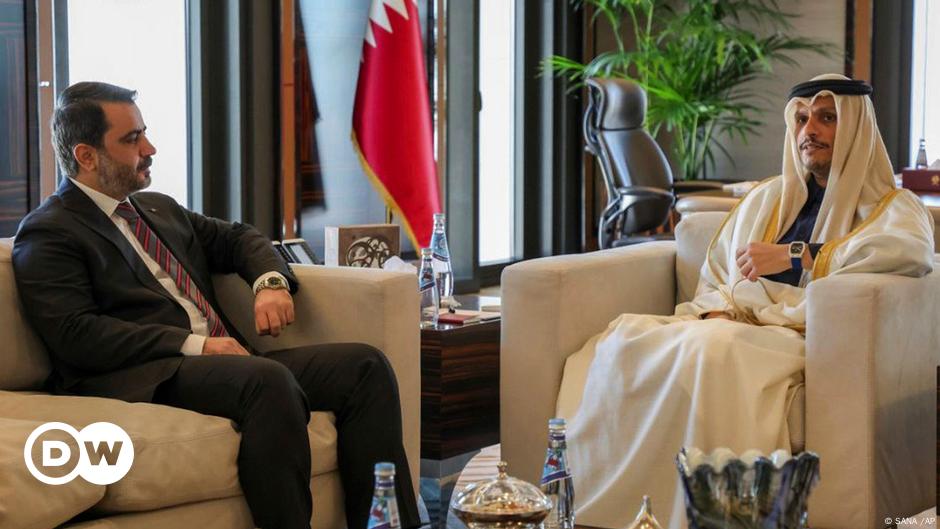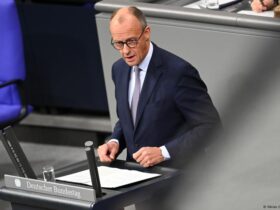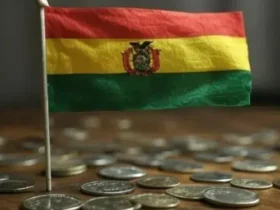The people of Hungary were surprised to know last week that the police chief had taken his life in the southern city of Hodmejovasarhali. In the earlier days, he had a goal of personal attacks in pro -government local newspapers, which was after a rally after a rally by the Governing Fides Party.
Therefore people were motivated to take violent action in the incident. It is not clear to what extent his tragedy was associated with public enmity, but it is tall with the image of a country in which political debate is becoming more and more sharp.
“Now for a long time, we have seen the public discourse rapidly aggressive,” says Gabor Polyick, Professor of Media Law and Policy at Budapest’s Eotwors Lorand University. “As a politicians continuously as an enemy, a person, makes groups inhuman, and propagander floods in the public realm with messages – which are found by the taxpayer.”
‘Neurotoxin of publicity’
At the end of the last week, Hungarians took to the streets of Budapest to protest the abetment of hatred speech and public discourse. The protest was organized by the Loupe Theater congregation, which was estimated that 50,000 people in the list responded to its call for a non-Muslim performance under the slogan “Hawa! Free public places and clean public discourse.” Comedian Edina was a speech of creative artists, including PottiOD, who warned that the Hungary government was using “The Neurotoxin of Propaganda” to control public debate.
One of the co-founders of the lup, actor Tamas Langile reported that the demonstration was done by the government poster plaster across the country. For more than a decade, he has provoked hatred against a series of separate bogimans, from refugees to Ukrainian President Volodimier Zelancesi.
“The money of billions of taxpayers is on disintegration and publicity,” Langel told DW. “We thought of doing something to combat the thesis poster.”
So far, their opposition activities have resulted in over 200,000 signature and a referendum promoted initiative to ban abusive language in the public sector. Langile and his fellow campaigners are waiting for the reaction from the Hungarian Election Commission.
Fon of personality, on and off-line
Prime Minister Victor Orban had issued another warning about the alleged enemies of Hungary a day before the protest, a few far away in an informal election campaign program. He spoke of parties, NGOs and media organizations, who reportedly “waited to implement instructions from Brussels”. According to Orban, he was responsible for the acts of aggression and spots against “Christian and nationalist artists, media and parties”.
In the incident, Orban took a selfie with a far-flung blog writer who repeatedly refers to opposition leader Peter Magyar as “Bug”. Magyar’s Tisza Party is currently ahead in elections, which indicates that it is a good chance to win a parliamentary election in the next April. In short, the fidesz media mechanisms are set on it.
Hungary’s ‘Don Weto’
This media equipment including pro -government blogs and those who influenced government blogs. The Prime Minister has consistently showed guests at the thesis outlet in recent months, as on the Rapper’s YouTube channel and the fans of Arban, Laszlo Pittinger, which Himafal is called “dopman”. Pittinger has nicknamed the right -wing populist Orban “Don Weto”, who accepts Hungary’s strategy to block the policies of the fictional mafia boss Don Vito Korlen, and Hungary’s European Union policies.
Media expert Gabor Polyc makes comment that, while the Prime Minister’s more frequent personal appearance is a new development, “whoever thinks that the faides have caught a lot to do in the digital realm, have denied reality as wrong.” A study by Budapest Thinktank Political capital It is revealed that between January and August 2025, about € 5.6 million ($ 6.5 million) was spent on Facebook alone in Hungary on political advertisements – and 85% of it was spent on the government’s stay.
Fides: Media dominance
The so -called traditional media dominance is even more striking dominance. The State Media Authority MTVA, which was brought in line long earlier by Orban, received a public franchise of about 80 billion foreints – approximately € 205 million ($ 240 million) in the first six months of this year. Many private news portals and regional newspapers are strongly in the hands of companies associated with closeness. The most important state supervisory body, media council, party loyalty is done for employees.
This is why Borders (RSF) without NGO reporters warned that “political, economic and regulatory pressure” is being increased on free media. Out of 180 countries on RSF World press freedom indexHungary is now 68th. It was at number 23 when he spent four years in opposition at the beginning of the second term of Orban at the office.
To better protect free media in countries like Hungary, the European Union recently introduced a new law, European media independence actHowever, for its implementation, member states have to rely – and the Hungarian government has already challenged the law before the European Court justice.
No improvement in sight
Given the balance of strength and harsh positions in Hungary’s media scenario, there is no expectation to reduce stress in public discourse.
Media analyst Gabor Polk says that the governing party takes a special responsibility, as it has constantly growing rhetoric, this is the necessary feature. “It is as if we have been living in a permanent election campaign for the last 10 years,” he says. “The party cannot work in any other way.”
Ecordinate, Polyk estimates that this discourse will become even more spicy in the coming months in the coming months in the coming months for the election in the spring of 2026. “It is going to be very loud, aggressive and cruel time,” he predicts.
This article has been translated from German.






Leave a Reply